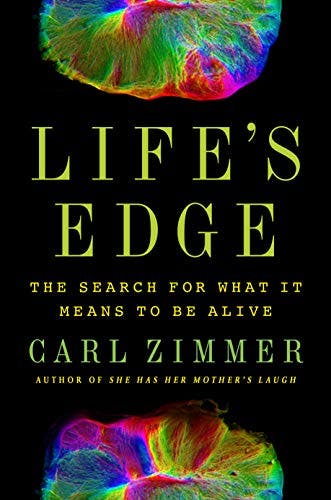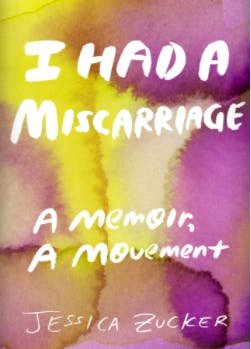In 1813, the East India Company’s James Forbes published an explosive story about monkeys. While traveling in India, he had stayed beneath an enormous banyan tree near the Narmada River. One day, a friend of his shot a langur monkey out of the tree, then took its body into a tent. Soon, Forbes wrote, a screeching horde of monkeys approached. When one male refused to be scared off, Forbes’s friend gave him the body he seemed to be petitioning for. “With tender sorrow he took it up in his arms, embraced it with conjugal affection, and carried it off,” he wrote.
New York Times science columnist Carl Zimmer tells Forbes’s story in his new book, Life’s Edge: The Search for What It Means to Be Alive, a popular history of the quest—unfulfilled to this day—to formulate a useful scientific definition of life. Back in 1813, Zimmer explains, British readers were astonished to learn that monkeys could be aware of the difference between life and death. That was supposed to be a God-given, human trait.
The grieving langur monkey helped inspire Charles Darwin in writing The Descent of Man (1871). That work would go on to give later life-seeking biologists many clues to chase, which they would eventually follow all the way down to the nature of DNA and the quantum physics of the atom. But none of humankind’s inquiries into the nature of life, including the spacecraft that searches for it elsewhere in the universe, have yielded a good working sense of what the noun really refers to.

The history of seeking life’s definition, Zimmer shows, is rife with errors. He begins with the unfortunate case of John Butler Burke, who declared in 1904 that he had created creatures called “radiobes” in a test tube by exposing bouillon broth to decaying uranium. The world was initially convinced: The New York Times reported that his radiobes lived “on the frontiers of life, where they tremble between the inertia of inanimate existence and the strange throb of incipient vitality.”
Similarly entertaining stories follow, like that of Thomas Huxley, who in the 1860s announced that life’s source was the layer of “Urschleim” he believed coated the oceans’ floors. The German ur means “original,” and schleim means “slime,” or “mucus”—Urschleim is a gorgeous expression, therefore, for primordial ooze. Later, scientists discovered cells and mapped their biochemistry, but that’s no help categorizing arguably living species like slime mold, which, in one type, consists of one gigantic but strategic cell. And what of viruses, like Covid-19: Are they alive? Many scientists would say no, since they don’t need to consume energy to continue existing, and only “survive” inside another, living host. Others would say yes, since they seem to take on a kind of life inside their hosts, and also evolve—a fact with which we are only too well acquainted.
In 1992, Zimmer writes, a NASA meeting concluded, “Life is a self-sustained chemical system capable of undergoing Darwinian evolution.” This definition might be right, but it was of no help to scientists when they tried to figure out whether a bit of meteoric rock from Mars discovered in Antarctica contained a fossil record of biological life. Dead things do not self-sustain or evolve, and anyway, how would we know whether a “chemical system” would be an appropriate way to conceptualize a Martian’s version of “life”?
Like the grieving langur monkey, Zimmer argues, our understanding of life itself has always been and may always remain an exercise in pure instinct. If the common ancestor of the human and the chimpanzee used its big brain to develop a deep sense of death, then the human notion of life may exist at some level of our cognition that simply does not unlock with science’s key. “Our understanding of death is not like Darwin’s theory of evolution or Thomson’s discovery of the electron,” Zimmer writes. “It has its origins in ancient intuitions.”
The narrative of the grieving primate also features in the new book I Had a Miscarriage, by the psychologist Jessica Zucker, who specializes in reproductive and maternal mental health. The title comes from the hashtag Zucker publishes on Instagram, where her account has become a hub for people who have experienced pregnancy loss of all kinds to gather socially, exchange stories, and support one another.

Almost a century after Forbes’s langur monkey story, Jane Goodall would observe a bereaved chimpanzee who carried her baby’s body around for two days after its death. Zucker cites a much more recent study that yielded yet more pronounced results—“chimpanzee mothers whose infants died carried around the mummified remains of their babies for up to two months.” She notes the same data as Zimmer but with a totally different valence: “Suffice it to say, this kind of primal reaction to sudden death is not a human construct,” she writes.
“We do not have a monopoly on grief,” she goes on. “It is the cultural associations and reactions around it that we are responsible for, and those have changed significantly over time.” Her aim in citing the chimpanzee is to make this grief appear more natural, and so remove the shame and stigma associated with miscarriages that keep them from being well understood. She cites a survey finding that “more than half of respondents believed that fewer than 5 percent of pregnancies end in miscarriage,” for example, while the real figure is something like one in four (it’s difficult to count pregnancies lost before they’re discovered). As was the case with her own miscarriage, which Zucker describes with extreme precision, the vast majority of losses are caused by chromosomal abnormalities, not misbehavior.
Evidence of how viciously certain sectors of human society misunderstand pregnancy’s relationship to science, life, and death comes from the anti-abortion conservatives Zimmer quotes in his book. In 2001, he notes, the campaigners Patrick Lee and Robert George tried to define life by asserting that a “distinct, living human individual comes to be with the fertilization of the oocyte by the spermatozoan.” But what if that cell splits in two, to become twins? Has a “distinct, living human” ceased to be now that two identical copies are in existence? They don’t seem terribly concerned about miscarriages, Zimmer points out. If people like Lee and George really thought every embryo was a person, they’d be staggered by the loss of, by Zimmer’s calculations, over 100 million pregnancies every year.
During a 2019 Alabama hearing on whether people pregnant by rape or incest should have access to abortion, which Emily Atkin wrote about for this site, a Republican named Clyde Chambliss laid down his definition of life while discussing the question of whether leftover IVF embryos are also unavenged victims. “The egg in the lab doesn’t apply,” he declared. “It’s not in a woman. She’s not pregnant.” It’s not life, but the living host of potential future life, that he sought to legislate.
I’ve seen a hundred articles in women’s magazines talking about miscarriage, but I didn’t realize until I spent time on Zucker’s page how extraordinary a community Instagram can foster. Trying to resist the idea that it was prurient, I browsed through some comment threads, looked at pictures of people’s stillborn babies, and read their names. Slowly, the point of all these memorial accounts showed themselves to be acts of public grieving. Many people who have lost much-wanted pregnancies would rather that other people share in the reality of their children’s existence than pretend it never happened.
Over and over again, I read women specifically describe the torment of “holding death” or “birthing death” at the precise moment they had intended to bring forth life. It is reproduction, of course, that gives us our concept of life. Dead babies seem to be something we cannot admit to, for fear of losing control of that concept. And so we pretend they don’t exist, at the direct expense of the people who carried them.
Zucker’s and Zimmer’s books are from two ends of a spectrum, revealing differences in the way life and death are framed. Where Zucker writes, firsthand, about the body, Zimmer is a writer of the laboratory. Where she is specific to case histories and professional experience, he generalizes across centuries. His subject is public, where hers is personal. In the end, Life’s Edge is about the meaning of a bereaved langur monkey, and I Had a Miscarriage is about being the grieving primate.
You don’t need me to tell you that we live in an age of mass death, caused by a virus that nobody can even say is dead or alive. Meanwhile, the death of a loved one is a devastation beyond comprehension. From afar, we can say that more than 500,000 Americans have died from Covid-19 in the last year. Up close, even two deaths seem to be difficult to add together, like adding zero to zero.
What the unimaginable scale of Covid loss has in common with the individual loss of a pregnancy, as well as the definition of life itself, is that quantification—humanity’s default tool for measuring, and the basis for the scientific method—simply does not help us to comprehend it. Instead, we return again and again to intuition, which is a method better suited to creative expression in language. The most compelling definition of life Zimmer quotes, for example, is that of the eighteenth-century anatomist Xavier Bichat, who framed it in relation to its foe. “Life,” he wrote, “consists in the sum of the functions, by which death is resisted.”








